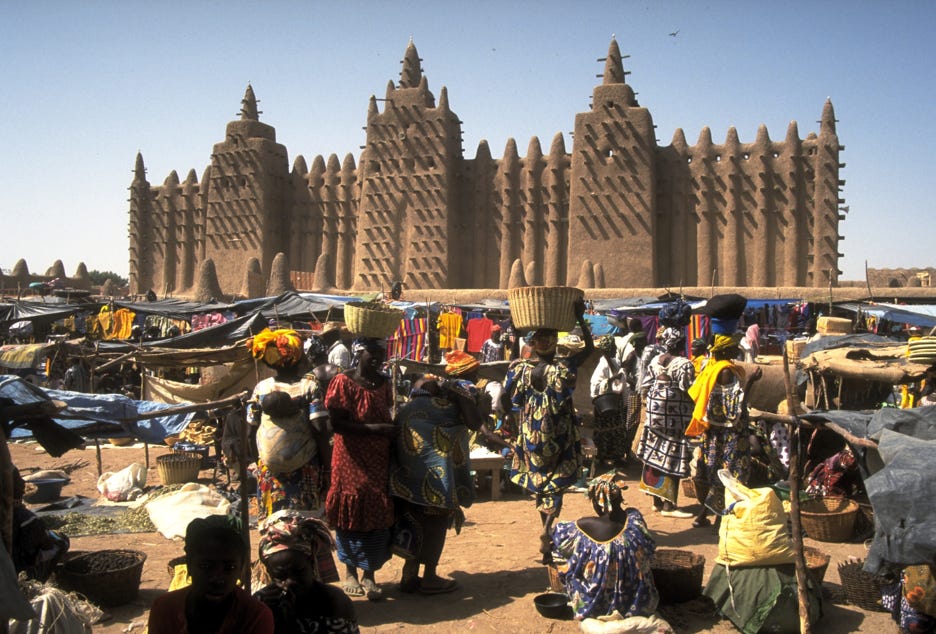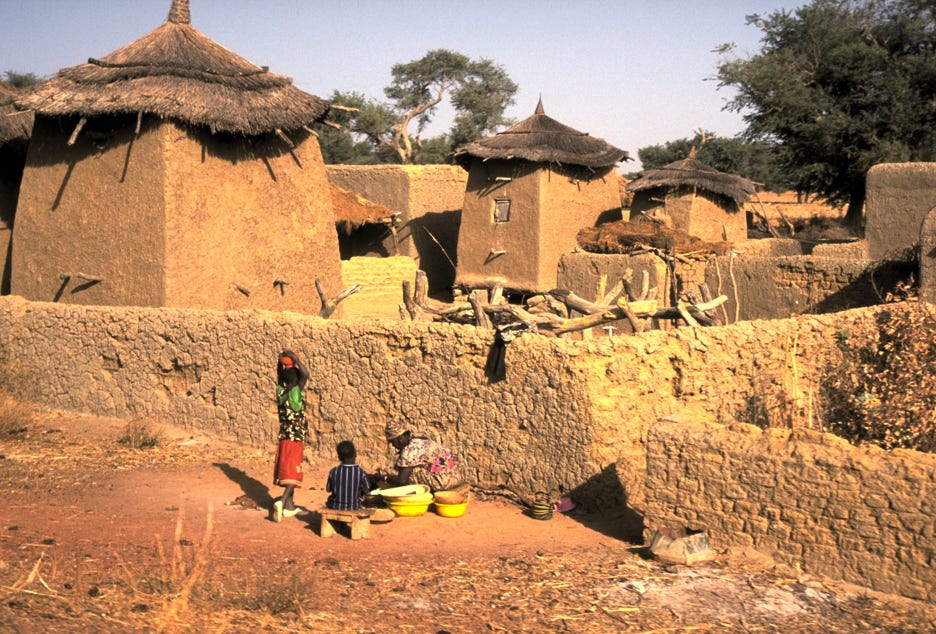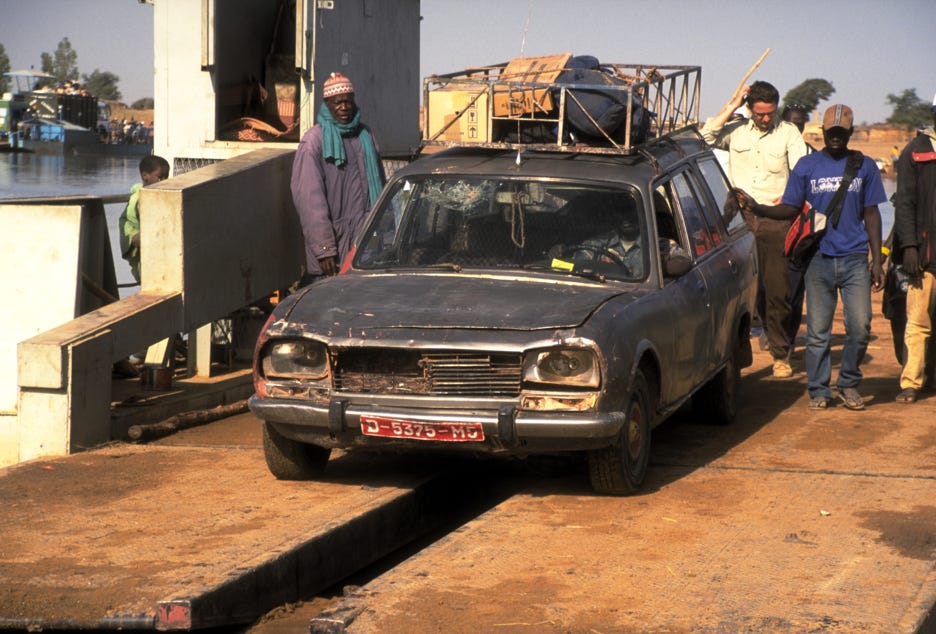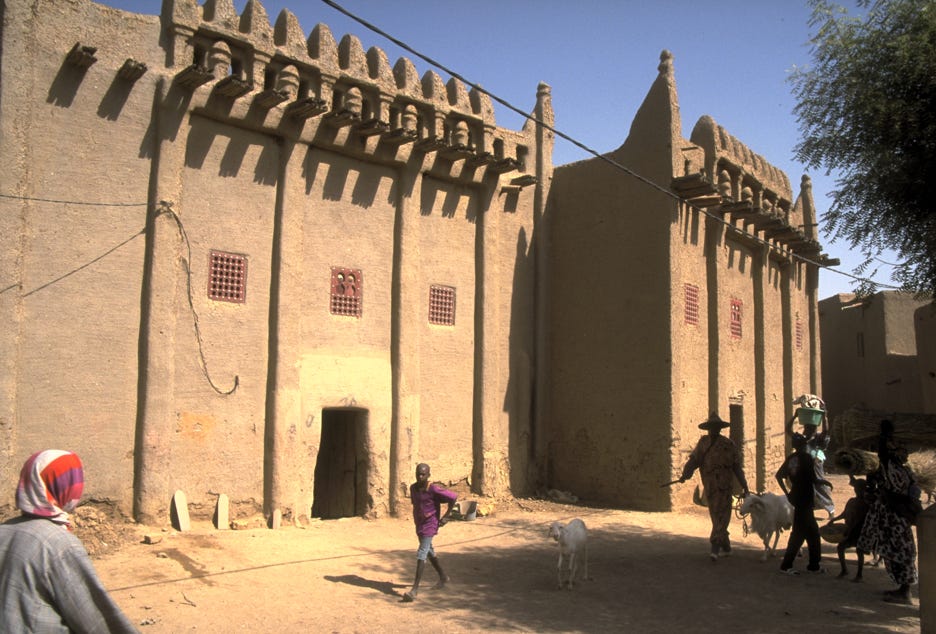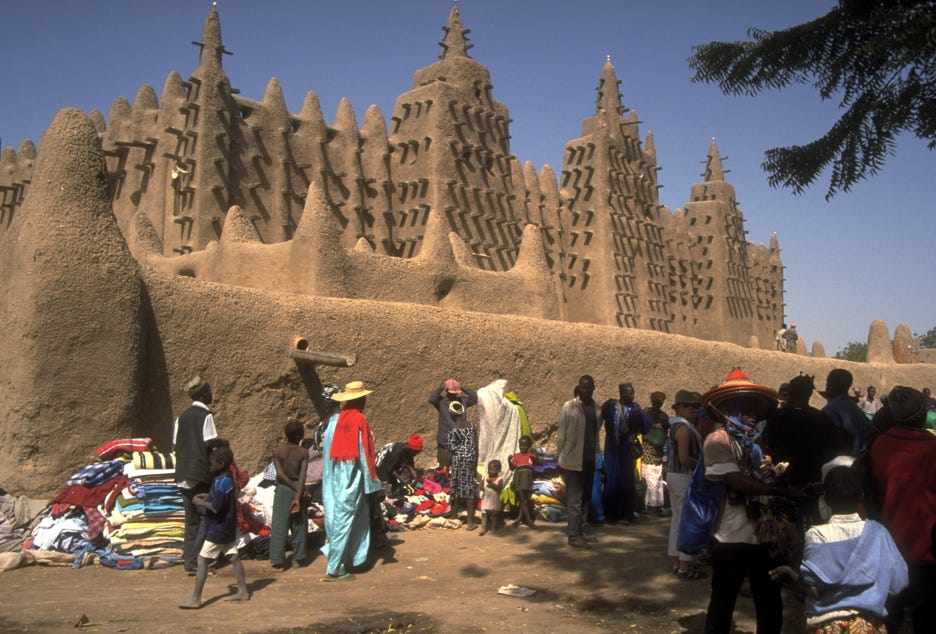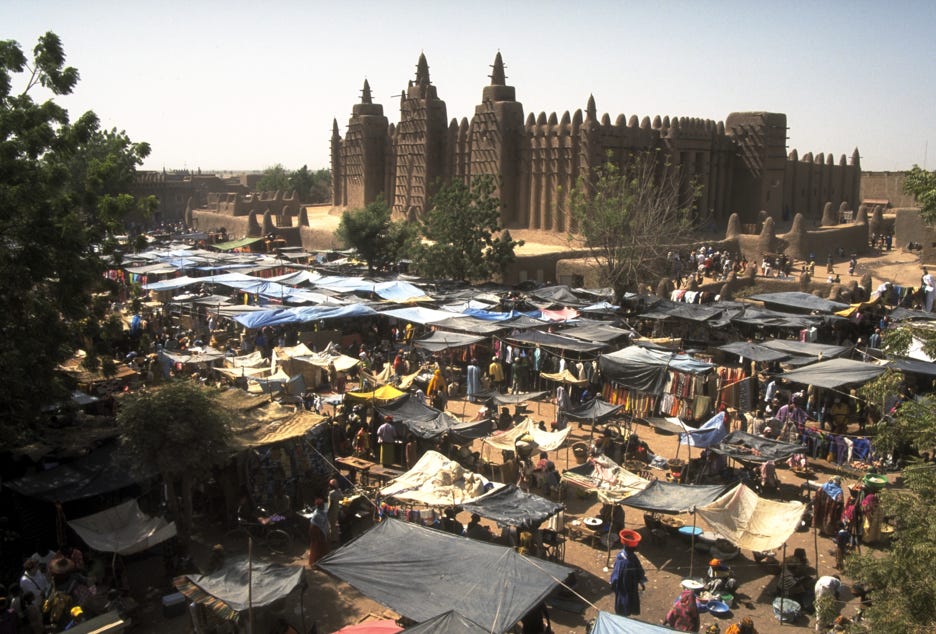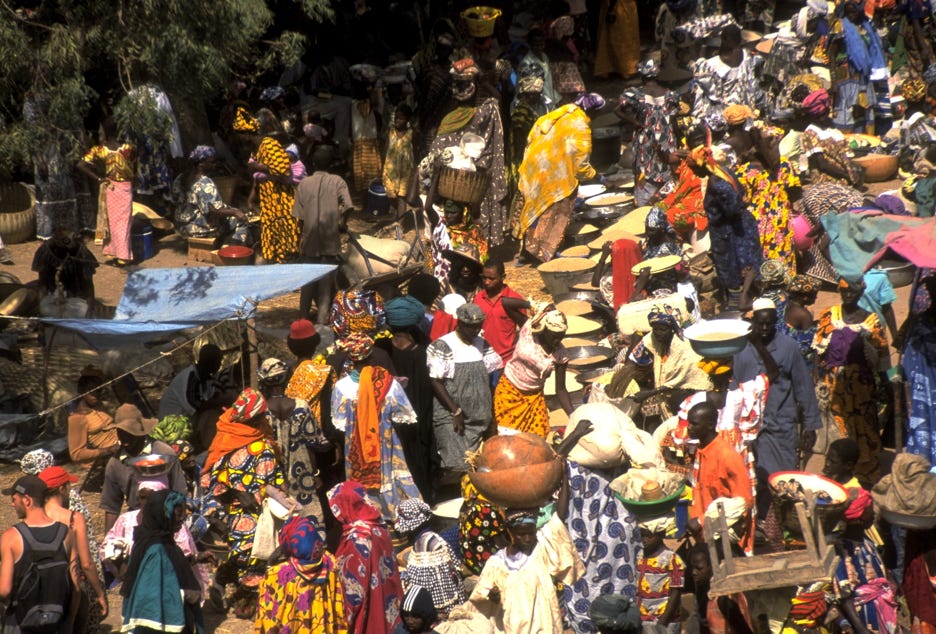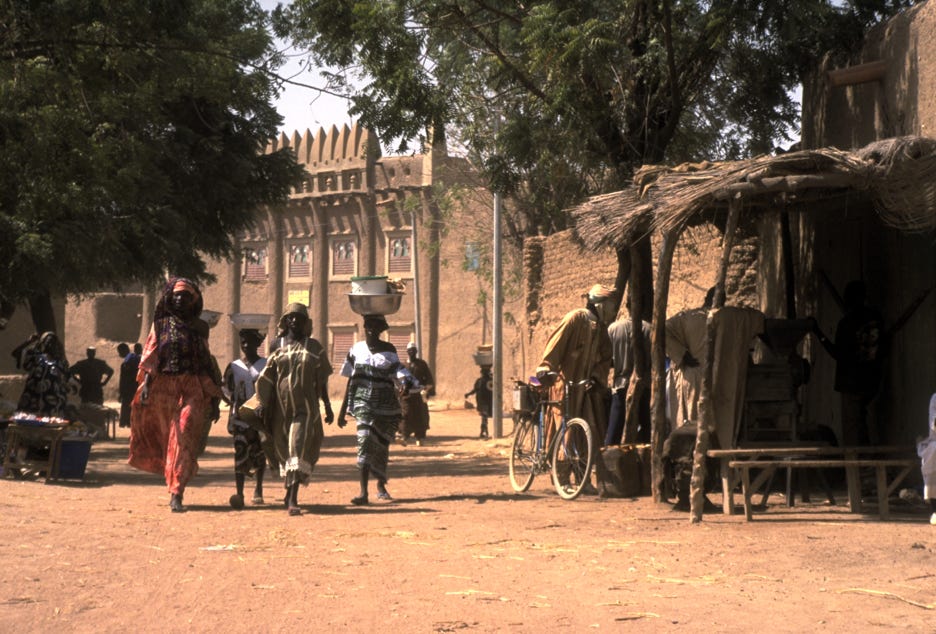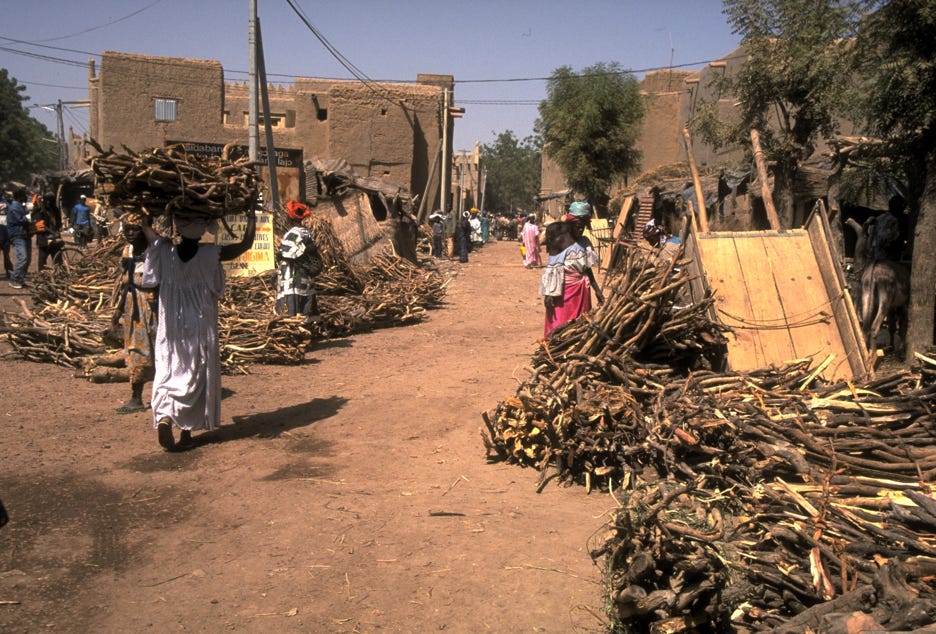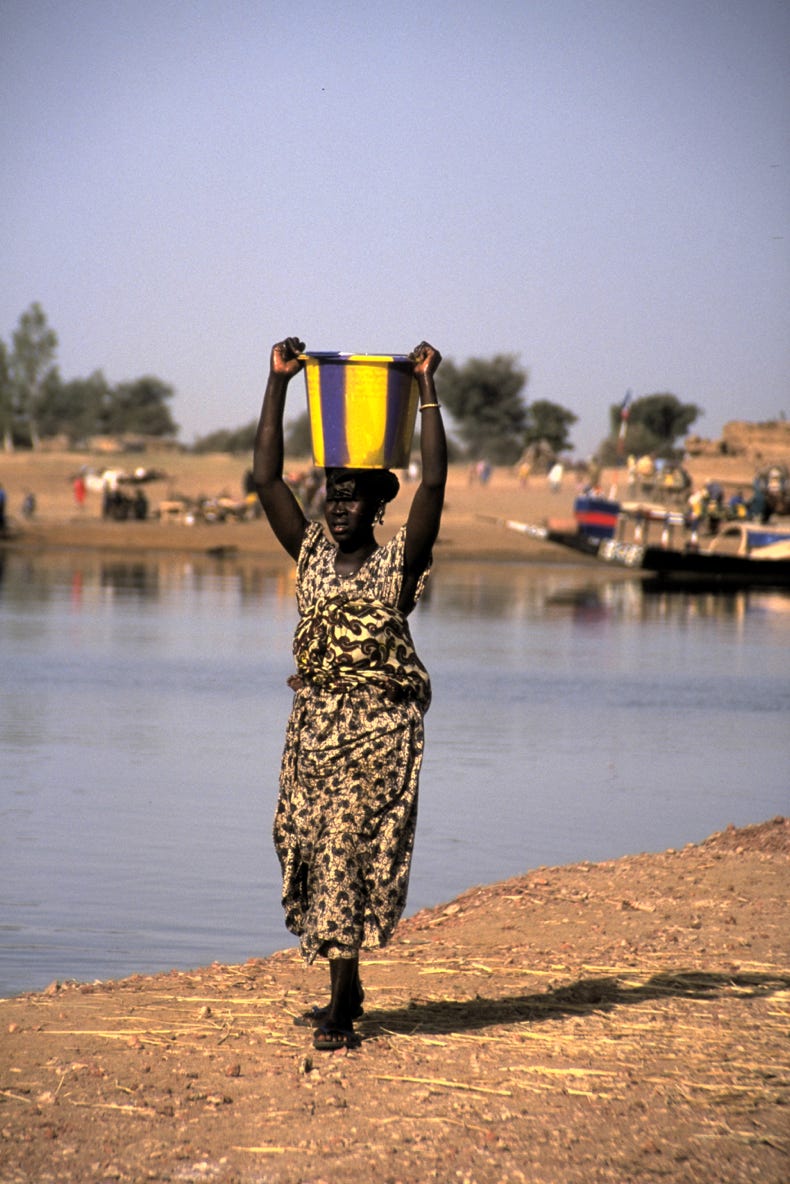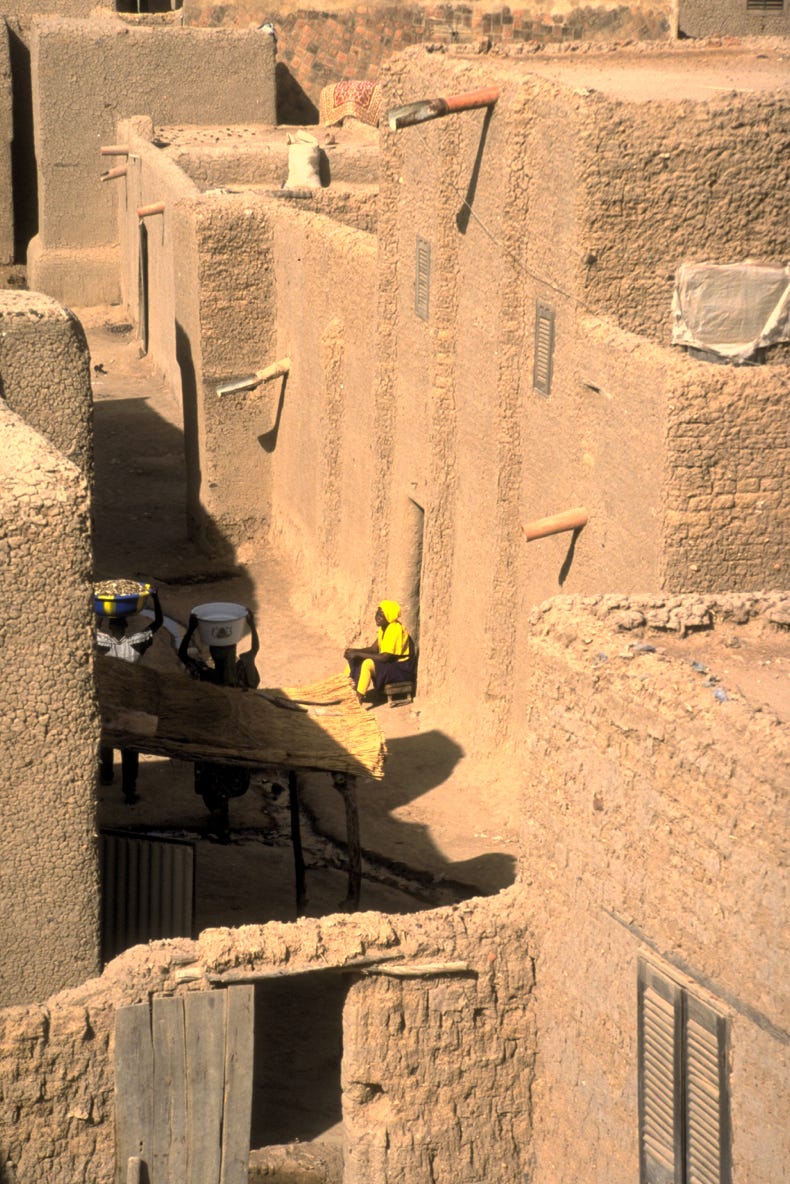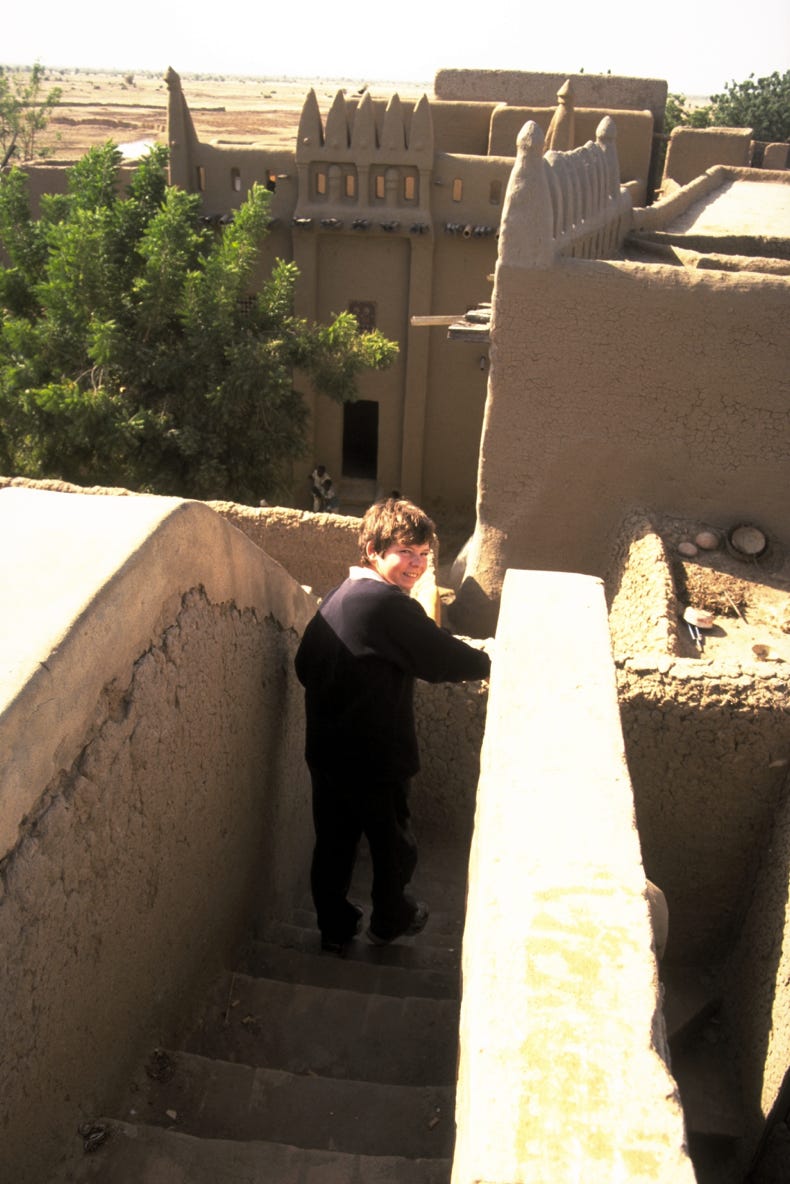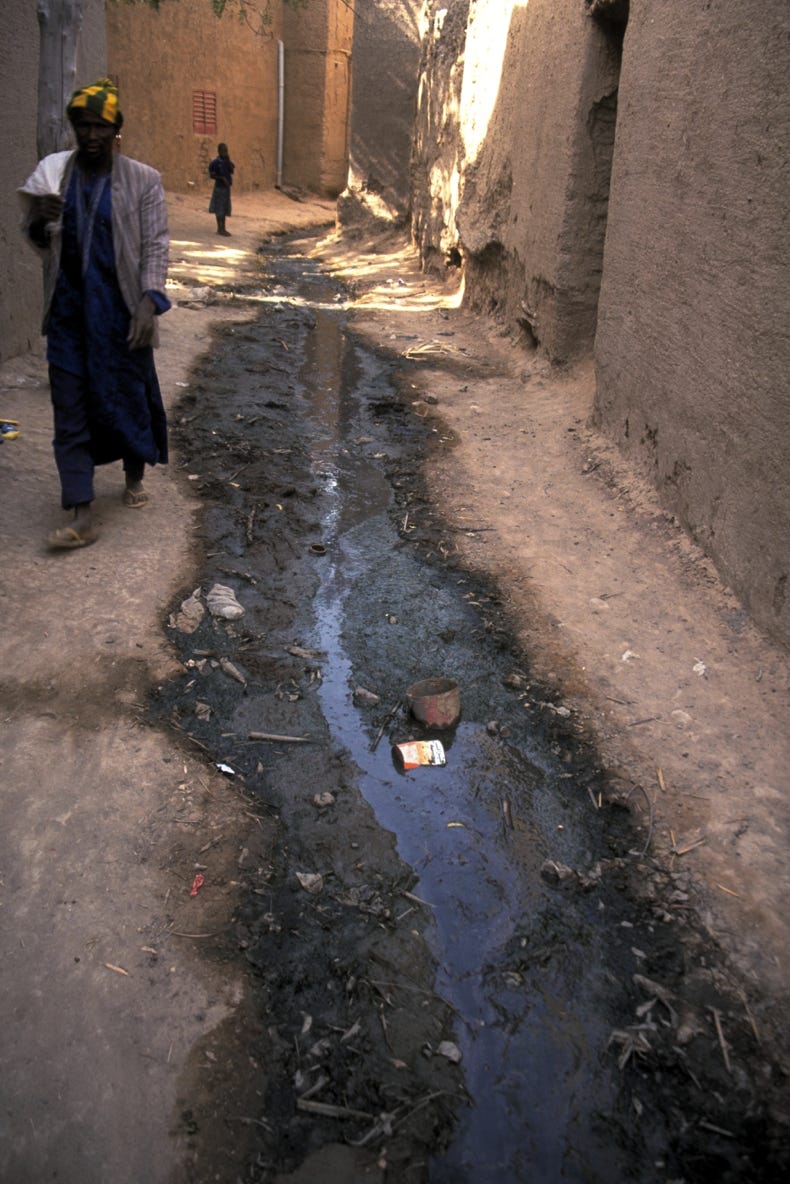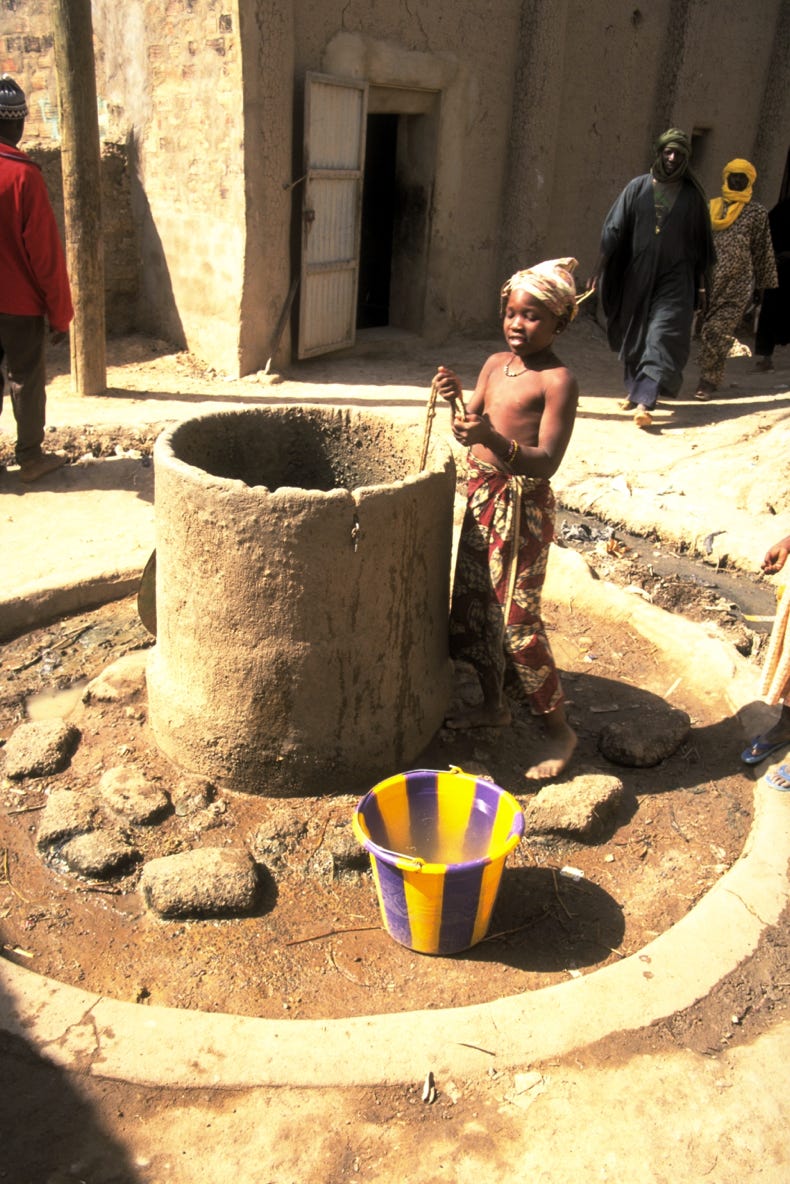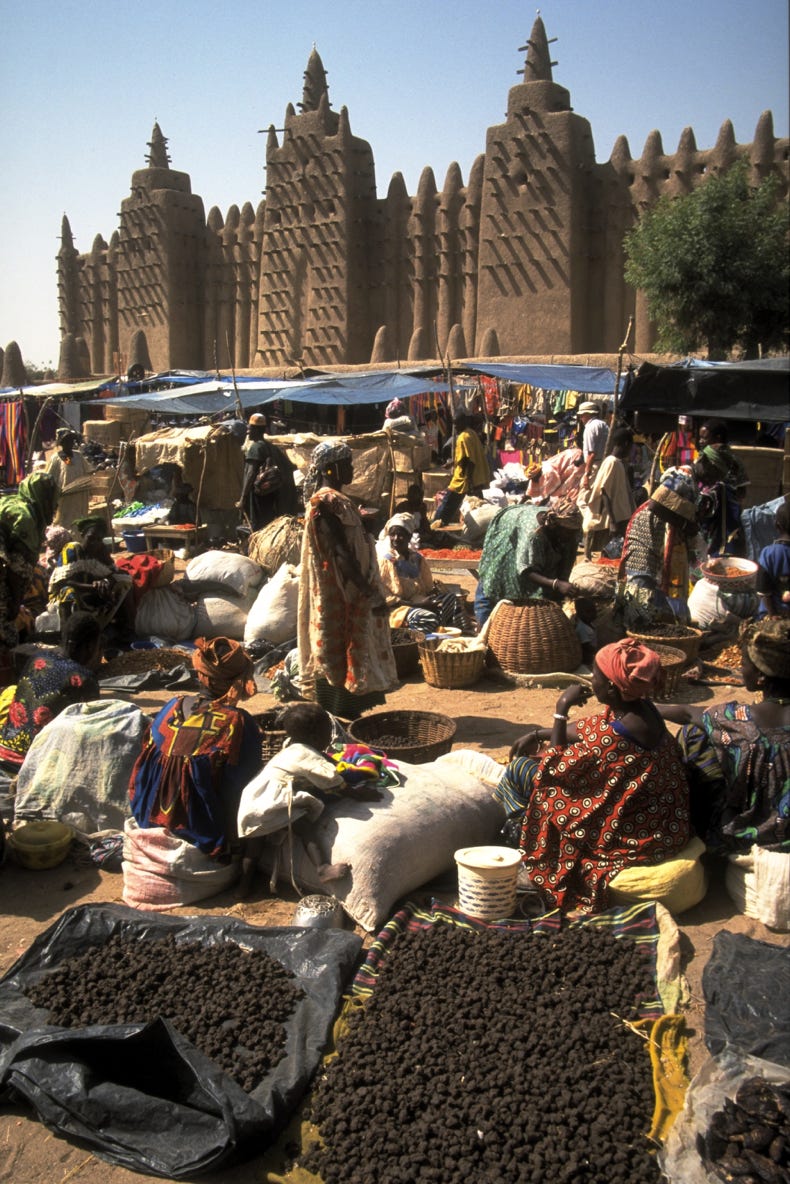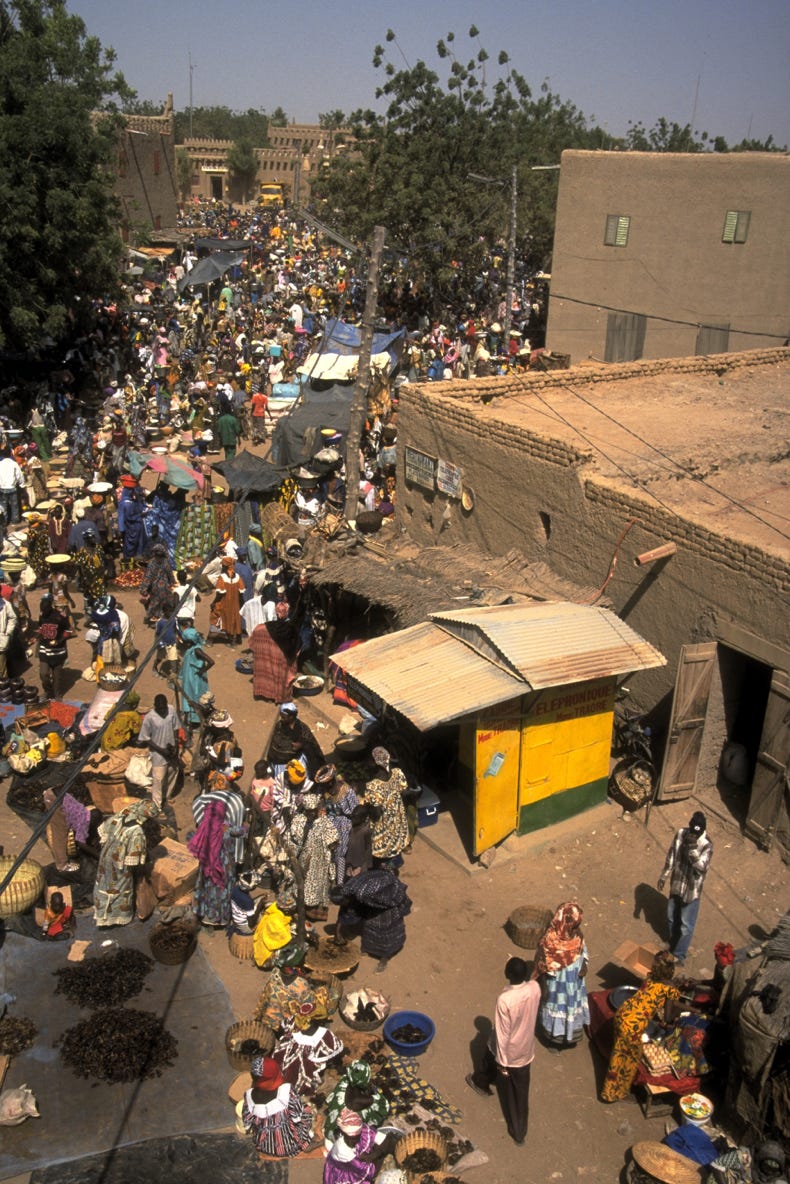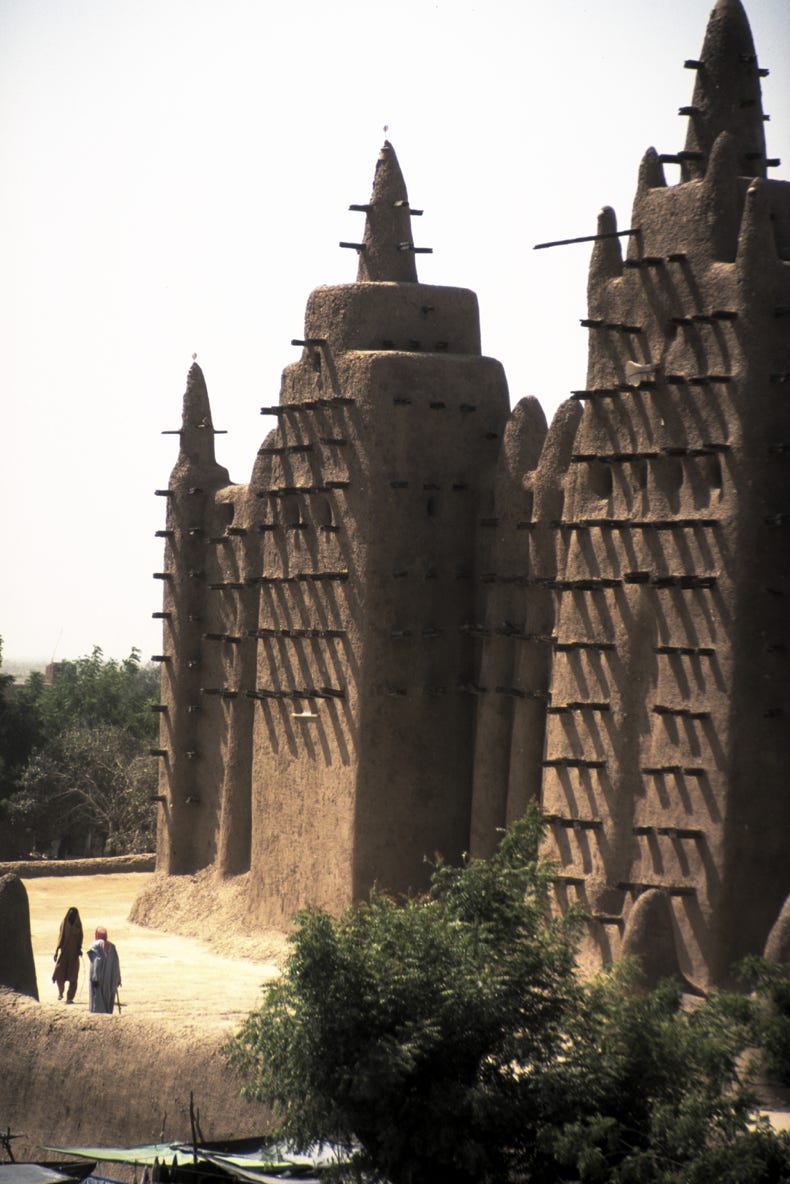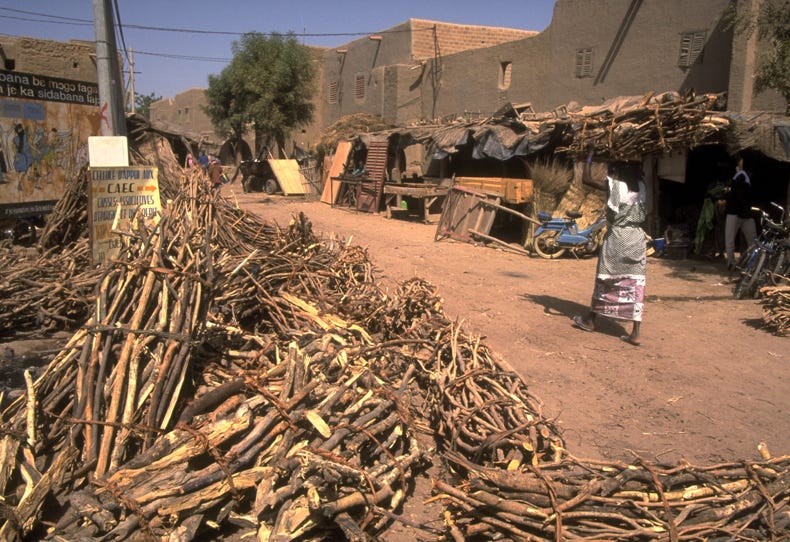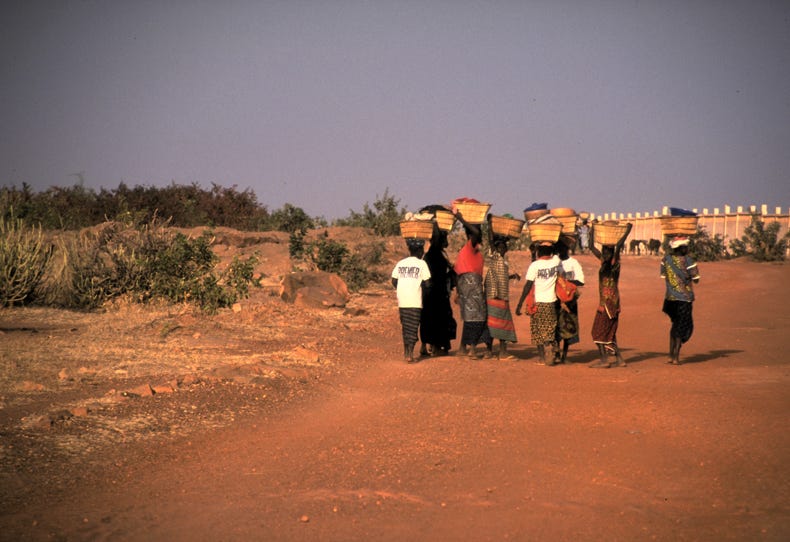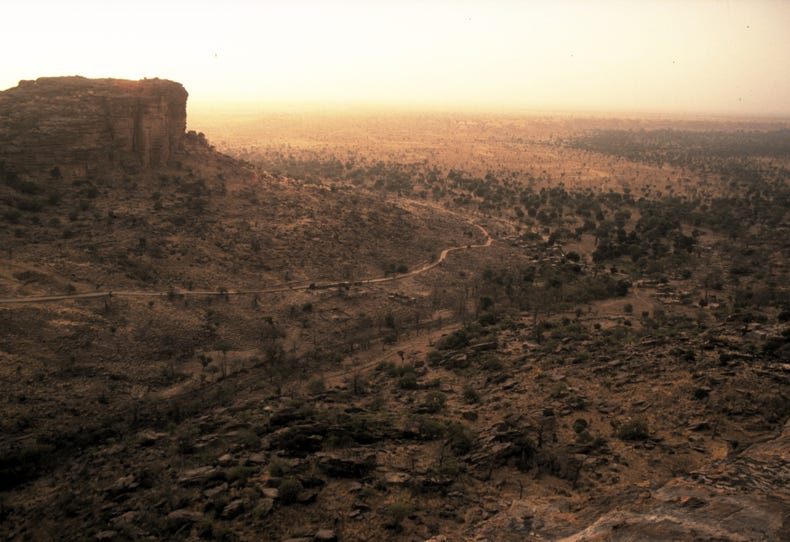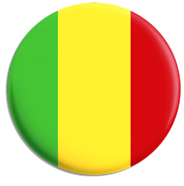

The following morning, Monday 19th January, we woke at 6am, had a great breakfast (focussing on crusty fresh light French-style bread, with just a touch of sand) and set off at 7:30am for Djenné. Djenné is one of Mali’s ancient cities, and is built almost entirely from mud bricks on an island in the Niger River. Its focus is a huge Sahel-style mosque, the world’s largest mud brick building. The 130 kilometre journey took about two hours, made slower by a punt crossing over the Bani River just before Djenné (the Bani is a tributary of the Niger). Punt crossings are always fascinating in Mali for being able to observe at close quarters the cars – many of them look like escapees from a car wrecker’s yard.
I had arranged our visit to Djenné to coincide the weekly Monday market day. It was a great, lively market, with animals, vegetables, spices, household goods of every kind, fuelwood (in the form of twisted tree branches), clothes (especially the bright extrovert materials that the women wear) – everything you would expect to equip a Malian household for the next week. The mosque provided an eerie, seemingly organic, almost fluid, backdrop to the colour and activity of the market, rising above it all at the edge of the open market square. If we had travelled all that way just to see the mosque on a non-market day, it may have been a little disappointing, especially as non-Muslims are not allowed to go inside (apparently following an incident a few years ago when a French fashion magazine used the mosque’s interior for some risqué photographs). But as a backdrop to the market, it was superb, especially from the roof of the Petit Marché that we ascended for the view
Actually, the town itself was also very interesting in its own right. Built almost entirely of mud brick, the buildings had very few sharp angles – everything seems to flow and bend. Except for a handful of wider streets that can take traffic, the streets are narrow laneways that are restricted to walking. But even walking without cars can be hazardous. We were warned by Sory to stand clear if any of the overhead pipes start emptying liquid into the street because most of them are connected directly to people’s toilets. The stench of the green rivers flowing down the middle of every street and laneway confirmed that diagnosis! As you can imagine, the aromas of the streets near the markets, with their open drains, animals, spices and people was quite a mixture that will be long remembered.
Soon after our arrival in Djenné, we were invited into a house to see the process of making mud cloth. This is one of Mali’s distinctive crafts, and the result is quite beautiful. I even splurged and bought a beautiful piece – I would have like two, but I was restraining myself (and bargaining hard as Andrew should testify!). After visiting the workshop (actually a tiny room), we went up onto the rooftop of the house for a superb view over the town – from the roofs of the houses, the mud brick structures really do look organic rather than built.
We left Djenné at about 1:30pm to start the long drive back to Mopti and on to Dogon Country in preparation for the next day’s visits. The total distance from Djenné to Sangha (the Dogon village where we stayed the night) was about 260km, and we didn’t reach the hotel until about 6:45pm. The journey was quite fast on the sealed road to Bandiagara (about 60km short of Sangha), but the road was atrocious after that (what the Malians and French call a piste, which means ‘track’). We were also delayed by two stops. As we were leaving Bandiagara, Sory pointed out a new high school that had recently been opened. I casually asked him how many students the school had, and he replied that he didn’t know and that we would stop and ask! So, somewhat taken aback that my ‘conversation-filling’ question had been taken so seriously, we duly pulled up at the front gate, walked in, met the Deputy (who is a good friend of Sory’s – like half the population of Mali, it seems) and then the Principal. We only stayed about 15 minutes, but it was enough time for me to receive an appeal for donations of second-hand books for the library, which has almost nothing at all in it. Perhaps that could have been the real reason for the stop?!?
The second stop was at a Dogon village at the top of the escarpment, near Bandiagara, called Songo. This village has a circumcision grotto which Sory is keen for Andrew to see (Andrew seems a bit “iffy” about this one). We began our visit, but the battery on Andrew’s camera failed (he had taken so many photos at Djenné), so it was agreed that we would cut the visit short and return the next day.
The Hotel Campement, our destination for the evening, is the only establishment for miles around that has electricity, as it has its own generator. I guess that makes it the best hotel in Dogon Country, even though the electricity is only turned on between 5:30am and 10:00am, and 6:00pm to 12:00 midnight. We had missed lunch in Djenné, so were glad to have the plat de jour – onion soup, chicken with couscous and sauce, and mango for dessert – not bad value for $A8 each, and that’s hotel prices.
Andy (age 12) writes:
Monday the 19th of January: Dad let me sleep in a bit this morning after had had his shower. After breakfast, we met Sory at 7:30 outside the hotel before driving the 2-hour journey to Djenné. Here it was market day. It was very amazing to see a huge mass of action and confusion with the backdrop of the largest mud brick building in the world. Dad was even happier because the lighting was good. We walked all around the market and the mud brick mosque. I also learnt that Sory wasn’t just interested in the hygiene of my hands when he kept asking if I wanted to wash them. He was in fact asking me if I had to go to the toilet. Dad told me this later in the day when I asked dad “Dad, why does Sory always ask if I would like to wash my hands?” After the markets which dad will probably go into more detail than I just did, we drove 6 hours and 20 minutes to Songo. On the way there, we were passing a high school when dad simply asked Sory for conversation how many students were in the school. It seemed that he really wanted to stop because he straightaway said, “I don’t know. Let’s go and ask the principal!” I was quite confusing having just gotten out of the car, going into the principal’s office and then listening to very fast French being spoken rapidly that I didn’t understand for about 10 minutes. When we arrived in Songo, we were about to up the cliff-face for a view of the village but my camera batteries ran out so we will go there tomorrow. It was then just another hour on a dirt road to reach Sangha, which is one of the larger Dogon villages that are right at the top of the escarpment. When we got here it was in a fair bit of darkness so we simply checked in and had a three-course dinner that was very large and has now made be feel quite full. It was onion soup for entrée that was very nice. The main course was a stack of couscous with some chicken followed by a sliced mango for dessert. We’re staying in the only hotel here that has electricity but it’s shut off from 12am to 5am. The beds here are quite interesting; they look quite solid but when you lie in it for a short time and then get up, you find that you’ve left a big hole in the middle of the bed. Since I’ve got to get up at 5:30 tomorrow, I’d better get to sleep. Good Night!

